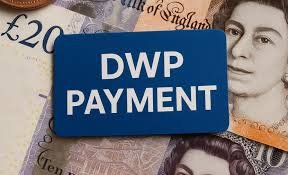When you put the words “benefits increase” in the same sentence as “DWP” — the entire UK welfare landscape pays attention. Why? Because every time there’s a whisper of extra support or top-up income for low-income households, disabled claimants, carers, pensioners and those on means-tested benefits — it quickly becomes a national talking point.
And for good reason.
Benefit shortfalls, inflation pressure, childcare costs, food hikes, rental spikes — most households are currently living on financial margins so tight that a few hundred pounds literally changes monthly survival.
So when the conversation started circulating about the dwp 750 payment boost june 2025 — the immediate question became:
Is this real? Who would get it? Why June? And what is the actual likelihood this becomes government policy?
This article breaks the entire topic down — from political context, to history of one-off support payments, to the economic factors that are driving the pressure for a 2025 uplift — so you can understand what is hype, what is possible, and what is strategically probable.
The Public’s Memory: The UK Has Been Paid Before
Before we look ahead to June 2025, we need to look backwards.
It’s absolutely key to remember that Britain has a provable historic pattern:
-
When inflation spiked → one-off cost of living payments were created.
-
When energy bills spiked → targeted winter cash boosts were issued.
-
When the poorest households felt squeezed → extra DWP lump sums were introduced.
In other words:
The UK has already created major one-off DWP support payments in recent years as a tool to instantly relieve social pressure.
That matters.
This means the idea of another injection in mid-2025 isn’t fantasy or conspiracy. It’s actually in alignment with behavioural history of the government.
And June is traditionally a tactical month — because June is the pivot between:
-
end of tax year impact
-
summer recess budgets
-
mid-year CPI uplifts
-
and new parliamentary cycles
Why June 2025 Is Financially Important
June 2025 is not just “another month”.
There are three very specific reasons that put June 2025 under a spotlight:
1) The April 2025 uprating will have already played out
All major annual benefit increases happen in April.
By June, the public will have fully experienced the real world value (or lack of value) from those increases.
2) June is where energy forecast recalculations hit consumer pricing
Energy cap announcements and winter forecast modelling are being published earlier — and households will begin to get clear projections of next winter cost.
This historically triggers pressure.
3) Political timeline: Pre-Autumn Policy Positioning
June sits right before the period where autumn welfare policy direction is drafted.
Offering support in June can change public sentiment before autumn political messaging gets locked in.

Who Would Be the Most Likely Beneficiaries?
If a £750 cash boost becomes a real policy document — it will almost certainly follow the same target logic as past payments.
The most likely categories would be:
1. Means-tested benefit claimants
-
UC
-
JSA (income-based)
-
ESA (income-based)
-
Pension Credit
-
Income Support
2. Disabled claimants
-
PIP
-
DLA
-
ADP (Scotland)
-
Attendance Allowance
3. Pensioners
-
State Pension households are among the hardest hit by inflation persistence.
Those three blocs represent the largest public pressure points.
But Will It Get Approval?
This is where realism matters.
The economic case FOR a one-off mid-year payment in 2025:
-
food inflation may soften, but not fully reverse
-
energy pricing will likely remain structurally elevated
-
mortgage and rent pressure will still be severe
-
wage growth is uneven, and not easing lower-income burdens
The political case FOR a one-off mid-year payment in 2025:
-
support payments are faster to deliver than full structural reforms
-
lump sums test well in polling
-
pre-winter interventions reduce autumn panic
The case AGAINST it:
-
Treasury pressure to reduce emergency spending
-
arguments to “normalise” the system rather than continue one-offs
-
political opposition might frame it as temporary vote buying
The debate isn’t about IF the UK needs more help.
The debate is purely about how that help is delivered.
Why the Story Is Gaining Traction So Early
It’s only late 2024 — and we’re already seeing viral discussion around mid-2025 money.
This means something culturally:
Households are planning survival a year ahead.
People are budgeting for 2025 already, because:
-
debt levels are rising
-
rent rises are astronomical
-
personal finance distress is not easing
So What Should Households Actually Do Right Now?
Here is the honest, practical advice:
1) DO NOT financially rely on any future £750 payment until the government confirms it.
Use it only as a possibility — not a certainty.
2) Track official DWP press releases every 30 days.
The government telegraphs policy six months before execution.
3) If you are eligible for Pension Credit — check eligibility immediately.
Many one-off payments in recent years required you to be in receipt of certain benefits on a specific qualifying date.
Getting eligible early creates eligibility protections.
4) Document every monthly cost increase.
If the government opens up consultations — real citizens with real documented numbers have massive influence.
Final Takeaway
June 2025 is shaping up to be a pivotal welfare month — politically, economically, and socially.
The UK has a clear historic track record of using one-off dwp 750 payment boost june 2025 as pressure valves to control public economic stress — and if inflation, food pricing, energy volatility and rental climate stay aggressive — then pushing out a summer 2025 cash uplift becomes not just likely, but strategically aligned with how relief has been previously delivered.
People aren’t hoping for luxury.
People aren’t trying to leverage the system.
People simply want enough to cope.
And that is why the nation is watching June 2025 already — months in advance — because for millions, survival budgeting is now a 12-month strategy, not a 4-week strategy.



